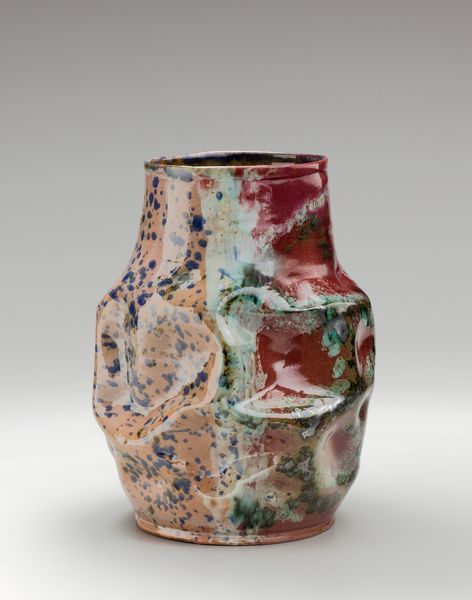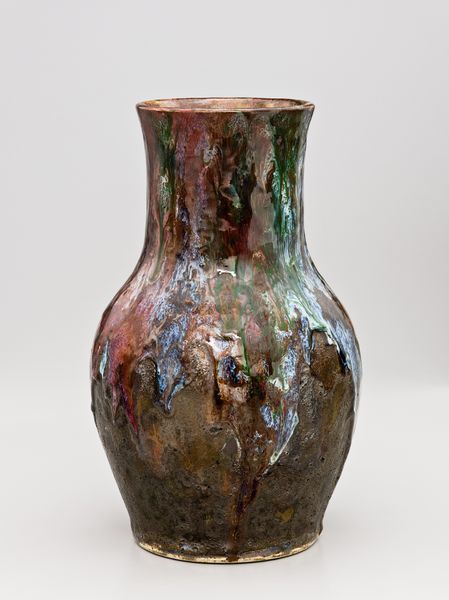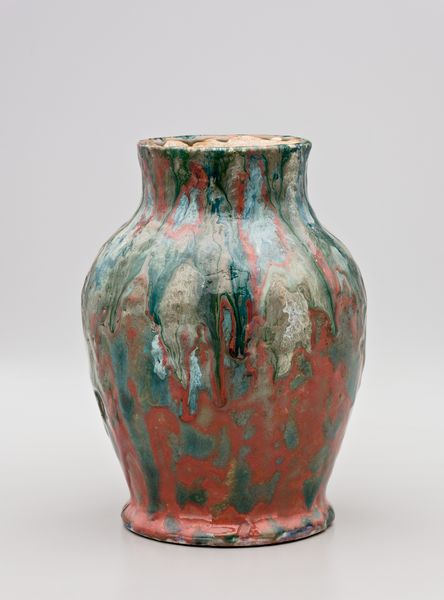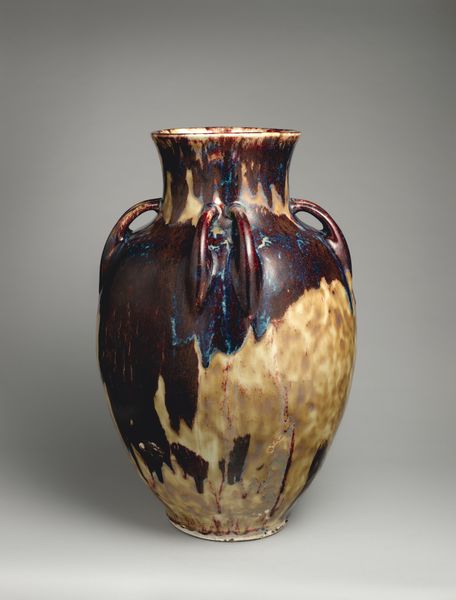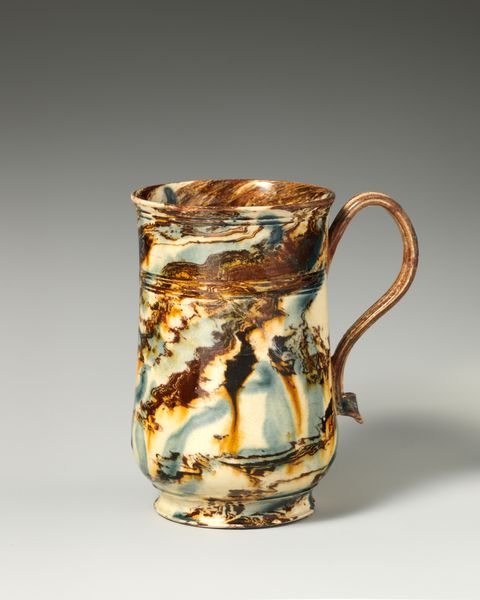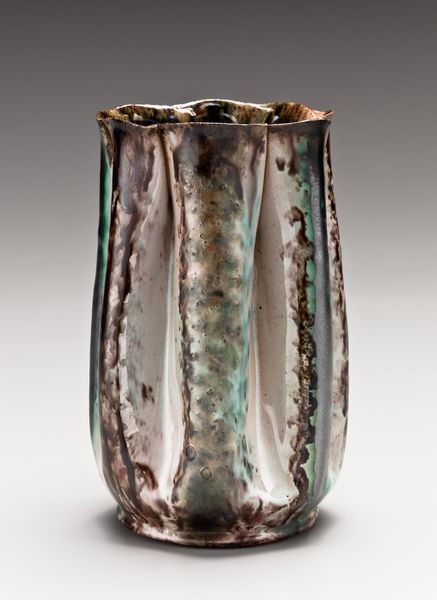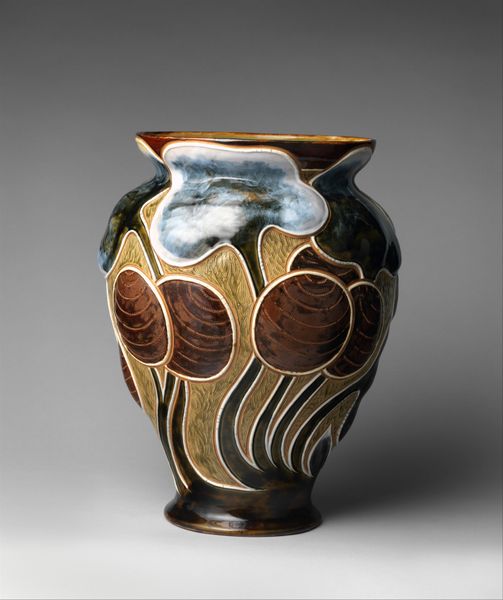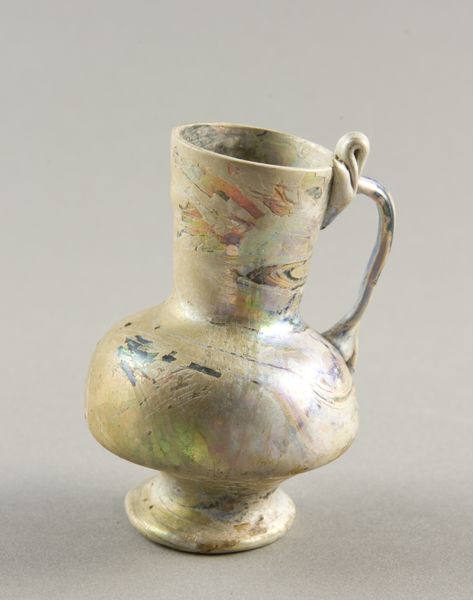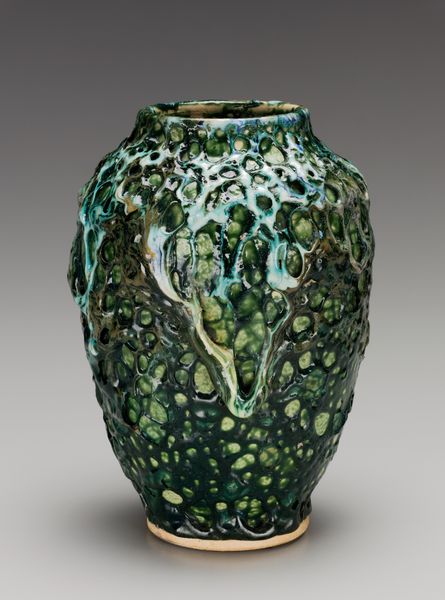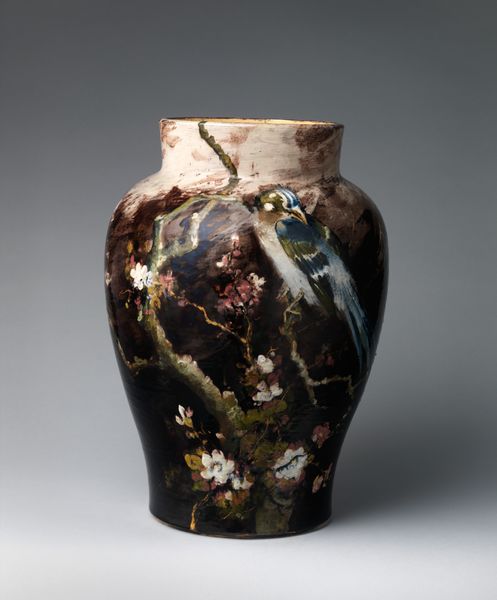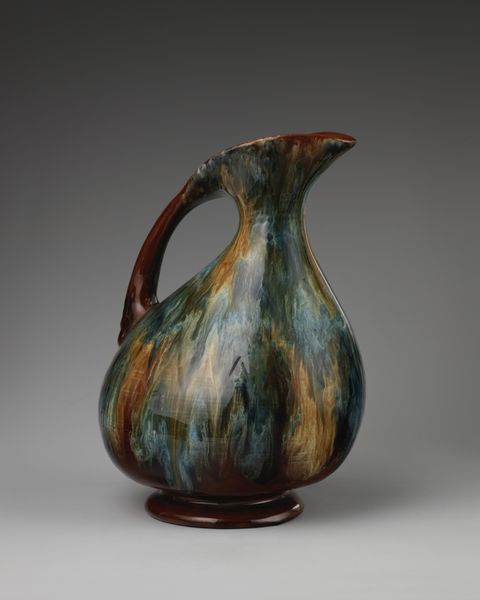
ceramic, sculpture
#
ceramic
#
form
#
sculpture
#
ceramic
#
decorative-art
Dimensions: 12 1/4 × Diam. 9 in., 11.3 lb. (31.1 × 22.9 cm, 5.1 kg)
Copyright: Public Domain
Curator: This fascinating ceramic vase by Henri-Léon Charles Robalbhen, dating from 1895 to 1905, strikes me as an almost alchemical vessel. There's a real tension in the way the colours seem to merge and bubble over the form. What's your initial reaction to it? Editor: My immediate reaction is a feeling of controlled chaos, which, given the political and social upheavals of the late 19th century, is intriguing. There's this earthy rawness paired with undeniable elegance. It makes me think about the role of decorative arts in times of social unrest. Curator: Absolutely. And notice the bulbous form resting on those curled feet – they remind me of tendrils reaching out, almost like it's trying to take root. It feels very much alive, an animate object holding stories within its clay. I get a sense of pent-up energy. Editor: Those "tendrils" read for me as representative of societal structures of the time trying to claw for ground amidst rapidly changing ideologies, it feels almost reptilian in the way it perches. Given the rise of industrialization, it's interesting how this ceramic piece attempts to claim space for handcrafted art. Curator: Precisely! Robalbhen is positioning this vase in opposition to the machine, maybe? There is so much to this vase's rough elegance. It really embodies a maker pushing against expectation and constraints of conventional beauty. It’s far more compelling than some perfectly rendered porcelain, in my opinion. Editor: Yes, because this work speaks of disruption! Who dictates these standards of beauty anyway? In many respects, art of this period and those working within Decorative Art, are reclaiming a non-dominant aesthetic that has strong cultural ties. There’s an element of resistance. Curator: A quiet, subversive act indeed. The artist uses earth and fire to ask profound questions through the decorative, a kind of protest manifested in three dimensions. Looking closer, it reminds me a little of my childhood. Did you have a piece of art like this in your home? Editor: No childhood memories like yours, I'm afraid. But revisiting the vase now, with its earthy palette and challenging silhouette, I am drawn to it beyond just its revolutionary message—it's deeply captivating in its flawed beauty, almost a testament to finding beauty in discord. Curator: Exactly! It's not just an object; it’s an invitation to ponder our own relationship with form, function, and, dare I say, the ongoing quest for meaning. Editor: An enduring message to keep searching, I think.
Comments
No comments
Be the first to comment and join the conversation on the ultimate creative platform.

